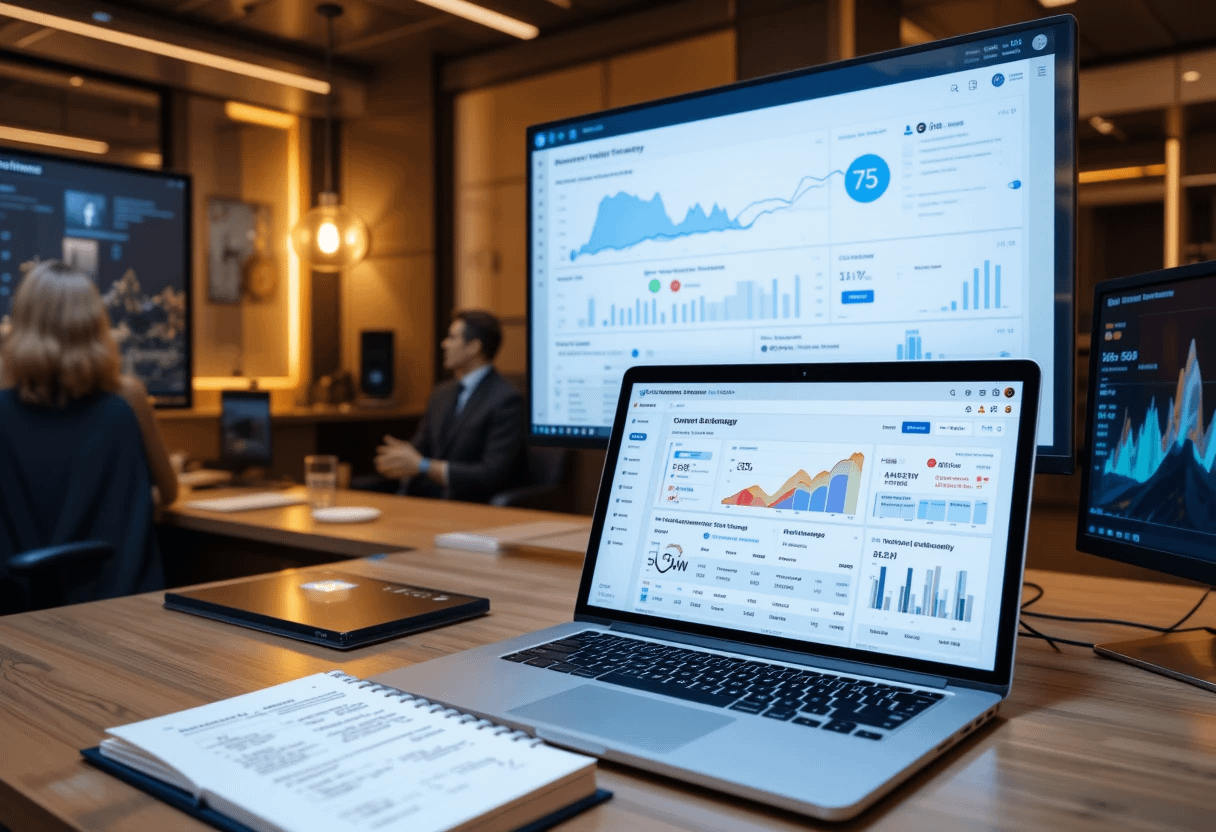
Supercharge Your Content: A Data-Driven Approach
Did you know that businesses using data-driven strategies have seen a 5-10% increase in their content performance? In today’s digital landscape, understanding how data and analytics shape your content strategy is crucial. Using insights from data can lead to better engagement, higher traffic, and ultimately, more conversions. This article will guide you through leveraging data and analytics to optimize your content creation and performance.
Understanding Your Audience Through Data
Website Analytics: Unveiling User Behavior
Google Analytics is a powerful tool that reveals how users interact with your website. Key data points like bounce rate, average time on page, and unique visitors help you track user behavior.
- Bounce Rate: High rates may indicate content that doesn’t resonate with your audience.
- Time on Page: Longer times suggest users find value in your content.
Set up Google Analytics effectively to monitor metrics important for your goals. This tracking will highlight where you can improve user experience.
Social Media Analytics: Tracking Content Reach and Engagement
Each social media platform offers unique analytics tools. For instance:
- Facebook Insights shows post engagement.
- Twitter Analytics provides insights on tweet impressions.
Measure how your content performs on these platforms. For example, a well-known brand might analyze their successful Twitter campaign with increased retweets and engagements. This data can inform your content strategy.
Keyword Research Tools: Identifying Content Opportunities
Tools like Ahrefs, SEMrush, and Google Keyword Planner are vital for keyword research. They help you discover content gaps and opportunities in your niche.
- Long-Tail Keywords: Target specific queries for better results. For example, “best budget smartphones” is more targeted than just “smartphones.”
Utilize these tools to generate content ideas that will attract the right audience.
Content Performance Analysis: Measuring Success
Key Performance Indicators (KPIs): Defining Success Metrics
To measure success, focus on KPIs like:
- Conversion Rates: How many visitors complete desired actions?
- Click-Through Rates (CTR): The percentage of people who click links in your content.
- Shares: Indicates popularity and reach of the content.
Set realistic and measurable goals for tracking your content’s impact. “Content marketing is about more than just traffic; it’s about conversions.” – Content Marketing Institute.
A/B Testing: Optimizing for Better Results
A/B testing is essential for refining your content. Test:
- Headlines to see which attracts more clicks.
- Images for higher engagement.
- Calls to Action (CTAs) for increased conversions.
For example, one successful A/B test could reveal that a specific headline performs significantly better than others. Always maintain a control group to gauge true performance.

Analyzing Content Performance Across Channels
Track how your content performs across platforms like your website, social media, and email newsletters. Gathering data from various sources offers a full view of your content’s effectiveness. According to research, businesses using multi-channel marketing see 300% higher ROI.
Content Optimization Based on Data Insights
Improving Content Based on User Behavior
User behavior data can lead to significant content revisions. For instance, if high bounce rates indicate users are leaving quickly, it’s time to refresh that content.
Regularly review content and adjust based on user feedback. This habit ensures your material remains relevant and engaging.
Refining Content Strategy with Data
Data insights can guide your content creation. Use past performance data to identify successful topics and formats. For instance, if videos are getting more views than blog posts, focus on video content.
“Adapting your content strategy based on data is crucial for long-term success.” – Industry Expert.
Leveraging Data for Content Promotion
Use insights to shape your content promotion strategies. Targeted content promotion can increase engagement.
For example, if analytics show a specific demographic engages with certain topics, tailor your promotions to reach that audience effectively.
Tools and Technologies for Data Analysis
Google Analytics: A Comprehensive Overview
Google Analytics offers features for tracking website traffic and user behavior. Key functionalities include:
- Real-time data tracking.
- Custom reports for specific metrics.
Utilize custom dashboards for quick insights tailored to your needs.
Social Media Analytics Platforms: Detailed Analysis Across Platforms
Many social sites provide specific analytics dashboards. Use them to integrate data for deeper insights. An example would be how a brand successfully combines Facebook and Instagram analytics to target audiences effectively.
Data Visualization Tools: Presenting Data Effectively
Tools like Tableau or Power BI help create visually appealing data representations.
- Use clear charts and graphs to communicate insights.
- Visuals make complex data accessible and understandable.
Presenting data effectively can drive better decisions.
Conclusion: Data-Driven Content for Sustainable Success
In summary, data and analytics are essential for optimizing content performance. Understanding your audience, measuring success, and refining strategies based on insights can lead to sustainable growth. Start analyzing your content data today and unlock its full potential!

